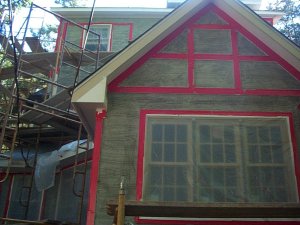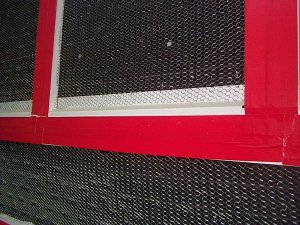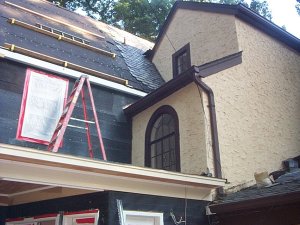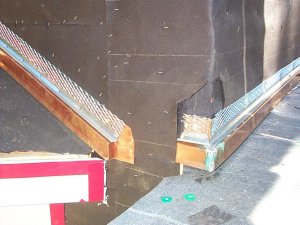
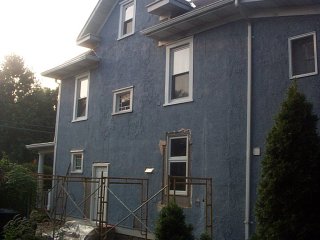
patches for new windows and doors. The
old walls had several patches from prior
remodeling which looked real bad.
Also, an addition on the back had stucco
that didn't match the existing house at all.
We tore off the whole side wall and the second story wall on the front.
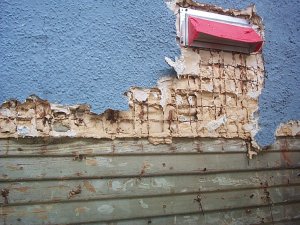
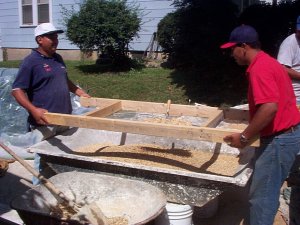
The old wood is still in excellent condition.
Here is more photographic proof that stucco ,real stucco, protects the wood. The clapboard was covered with paper, not
tarpaper or a vapor barrier and welded wire
lath, which is stronger than the modern lath we use.
size of the rocks in the existing stucco.
This took forever, but the rocks matched exactly.
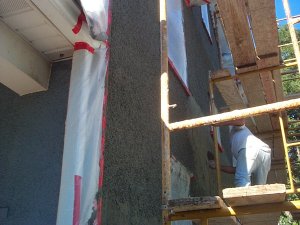
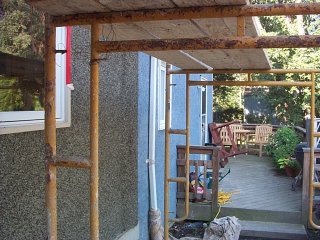
to hide the joint between our wall and the addition. This breaks the wall up to hide
the differences in the pattern.
